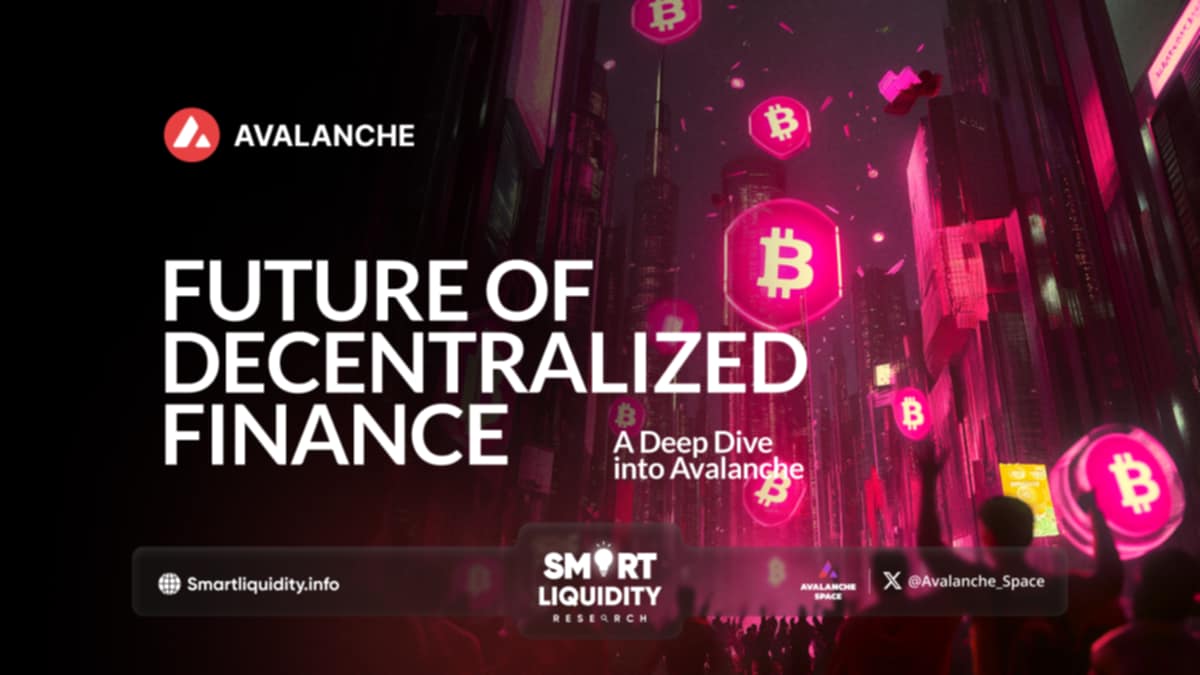Exploring the Future of DeFi: A Deep Dive into Avalanche


Decentralized Finance (DeFi) has been a transformative force in the financial landscape, enabling users to access financial services without intermediaries. Among the various platforms facilitating this evolution, Avalanche has emerged as a prominent player. Exploring the Future of DeFi: A Deep Dive into Avalanche. This deep dive will explore what Avalanche offers, its architecture, advantages, and its potential future in the DeFi ecosystem.
What is Avalanche?
Avalanche is a high-performance, scalable blockchain platform designed for decentralized applications (dApps) and enterprise blockchain deployments. It aims to provide fast transaction processing with low fees, making it an attractive option for DeFi projects.
Key Features of Avalanche
Consensus Mechanism:
- Avalanche employs a unique consensus protocol called Avalanche Consensus, which combines elements of classical consensus and Nakamoto consensus. This allows for high throughput and near-instant finality, making it suitable for DeFi applications that require quick transaction times.
Subnets:
- One of Avalanche’s standout features is its support for subnets—customizable blockchains that can be tailored to specific use cases. This allows developers to create their own ecosystems, optimizing for particular transaction types or regulatory requirements.
Interoperability:
- Avalanche is designed to be interoperable with other blockchains, including Ethereum. This cross-chain functionality allows users to transfer assets and data seamlessly between networks, broadening the accessibility and usability of DeFi protocols.
Low Transaction Fees:
- The network’s efficient design results in significantly lower transaction costs compared to many other platforms. This is crucial for DeFi applications where high fees can deter users from engaging with the ecosystem.
DeFi Ecosystem on Avalanche
Avalanche has quickly developed a robust DeFi ecosystem with various applications, including:
- Lending and Borrowing: Protocols like Benqi and Aave on Avalanche allow users to lend and borrow assets, offering competitive interest rates.
- Decentralized Exchanges (DEXs): Platforms like Pangolin and Trader Joe enable users to swap tokens quickly and efficiently, benefiting from Avalanche’s low fees and fast confirmation times.
- Yield Farming and Staking: Users can earn rewards by providing liquidity or staking assets in various protocols, enhancing user engagement and capital efficiency.
Advantages of Using Avalanche for DeFi
Scalability:
- Avalanche’s architecture can handle thousands of transactions per second, making it a viable option for high-demand DeFi applications.
Speed:
- Near-instant transaction finality reduces the risk of front-running and enhances the user experience, which is crucial in DeFi trading environments.
Developer Friendly:
- The platform supports the Ethereum Virtual Machine (EVM), allowing developers familiar with Ethereum to build on Avalanche with minimal friction.
Security:
- The Avalanche consensus mechanism offers a high level of security, ensuring that DeFi applications can operate safely.
Challenges and Considerations
While Avalanche presents numerous advantages, it also faces challenges:
- Competition: The DeFi space is crowded, with numerous platforms vying for market share. Avalanche needs to differentiate itself continuously to attract new users and developers.
- Regulatory Environment: As DeFi grows, regulatory scrutiny will likely increase. Avalanche and its projects must navigate these regulations effectively to ensure compliance and sustainability.
- User Education: As with any new technology, educating users about how to utilize Avalanche’s features effectively is essential for widespread adoption.
Future Outlook
The future of Avalanche in the DeFi landscape looks promising. As the platform continues to evolve and attract more developers and users, it could play a significant role in shaping the next generation of decentralized finance.
- Innovative Projects: Continued innovation from the community may lead to new financial products and services that can leverage Avalanche’s capabilities.
- Cross-Chain Developments: As interoperability becomes increasingly important, Avalanche’s ability to connect with other blockchains will likely drive further adoption.
- Expansion of Use Cases: Beyond DeFi, Avalanche can support a range of applications in areas like supply chain management, gaming, and NFTs, broadening its impact.
Conclusion
Avalanche stands out as a powerful platform in the DeFi space, combining speed, scalability, and flexibility. As the ecosystem grows, its success will depend on continued innovation, effective user engagement, and navigating the regulatory landscape. The future of decentralized finance on Avalanche looks bright, promising a new era of financial accessibility and efficiency.




